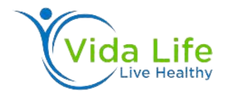Eating clean is a way of prioritizing whole, unprocessed foods over those processed in any way, including high-fructose corn syrup, added sugars and preservatives; lean proteins, whole grains and fruits should be consumed instead. Furthermore, artificial flavors, colors and additives should be limited or avoided altogether.
However, some interpretations of “clean eating” go to extremes that could result in nutritional deficiencies and disordered eating patterns.
It’s a way of life
Clean eating involves not only fresh and whole foods like fruits and vegetables, but also heart-healthy whole grains, lean proteins, fluid plant oils and limited added sugar. Clean eating aligns with American Heart Association dietary guidelines while helping prevent serious diseases and conditions like high blood pressure, obesity and cancer.
Clean eating is generally seen as beneficial, yet many wellness bloggers often promote an overly restrictive definition that could increase risk of disordered eating. Pursuit of clean eating could lead to overly restrictive behaviors like restricting, binge-eating and purging.
Some advocates recommend eliminating all food and beverages containing added sugar, replacing these items with naturally sweet ones like fruits, unsweetened tea and coffee, water, seltzer or DIY recipes for homemade desserts. Although removing all traces of added sugar may be challenging for most individuals, as is eliminating processed food altogether.
It’s not a diet
Clean eating involves filling your plate with whole, unprocessed foods like fruits and vegetables as well as lean proteins from sources that have not been overly processed or packaged with additives, preservatives, excessive added sugar or excess sodium.
Always keep in mind that eating plenty of fruits, vegetables and whole grains is essential to good health, regardless of whether or not you choose a clean eating diet. Too many raw foods can lead to mineral imbalance and dehydration if eaten excessively.
Recent pilot research suggests that adolescents and young adults generally hold positive views of the “clean” eating trend; however, definitions vary; some involve restricting or eliminating specific food groups; this may lead to disordered eating behaviors like orthorexia nervosa. Further research is necessary in order to fully comprehend this dietary trend and aid its prevention.
It’s not a fad
Clean eating can be an excellent starting point to creating a more healthful diet, but it should never become an inflexible or restrictive approach to food that leads to disordered eating behaviors and body dissatisfaction.
Recent research examined attitudes about “clean eating” among a sample of adolescents and young adults drawn from the National MyVoice text messaging cohort. Participants were asked to rate open-ended statements detailing various definitions of clean eating, as well as indicate its perceived healthiness or harminess.
Many respondents defined “clean” eating as consisting of only healthy foods and excluding harmful ones like high-fructose corn syrup, artificial flavors and colors, and preservatives. Some more stringent interpretations of clean eating restrict certain food groups or entire categories like gluten and dairy which could result in nutritional deficiencies; such extremes should be avoided in order to protect oneself against nutritional deficiencies as well as shame associated with food choices – which may be particularly detrimental for individuals suffering from eating disorders.
It’s not a cure-all
Clean eating can sometimes go too far and can even be harmful. When someone becomes obsessed with food and restricts their diet in an attempt to achieve weight control, they run the risk of orthorexia nervosa disordered eating patterns – which can cause serious health complications like anxiety, depression and high blood pressure.
Participants viewed each vignette randomly, then responded to open-ended questions regarding their reaction to it. Their answers were then coded to identify common themes before being analysed using descriptive statistics and correlation analyses.
Most participants viewed clean eating as an integral component of overall wellbeing, including high-quality proteins, fruits and vegetables from diverse sources, whole grains, as well as foods without added sugars or excess sodium. They stressed the importance of purchasing local and organic food to reduce exposure to pesticides.

